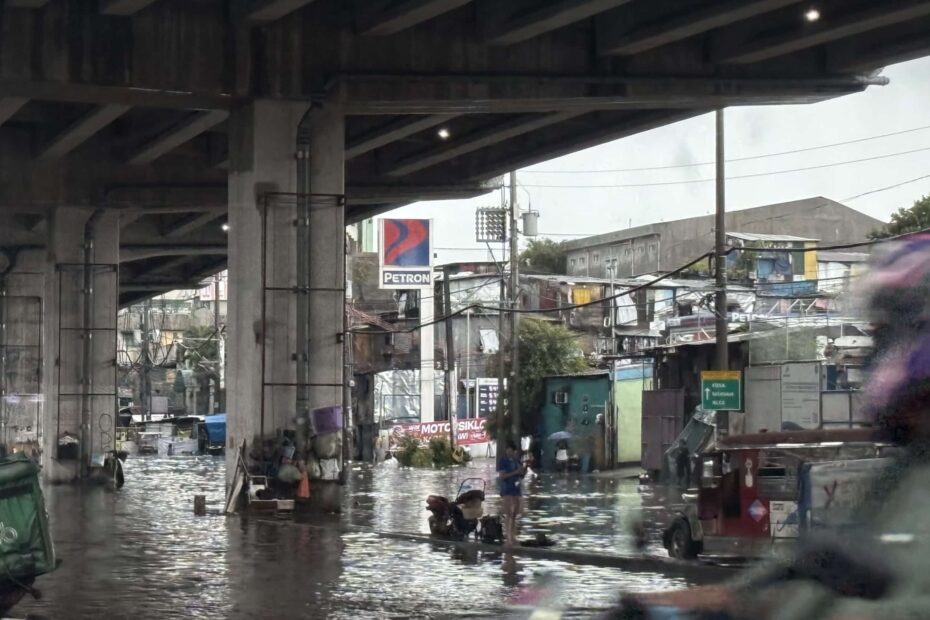The Philippines, a country no stranger to natural disasters, faced another massive blow in July 2025. Metro Manila and surrounding provinces were battered by relentless rainfall and violent thunderstorms, leading to widespread urban flooding. According to the MMDA, 44 key areas in Metro Manila were underwater, with cities like Caloocan and Valenzuela forced to declare a state of calamity due to infrastructural breakdown and inaccessibility.
But beyond stranded commuters and knee-deep waters lies a far more troubling reality: the Philippine economy is now facing a multi-sectoral shock that could stall growth and shake investor confidence.
Billions in Real Loss
According to the Department of Agriculture, the recent weather events have caused over ₱1.1 billion in damage to crops, livestock, and infrastructure. This not only affects food supply but puts upward pressure on inflation, which had already been hovering above target in Q2 2025.
This isn’t just about produce. Micro, small, and medium enterprises (MSMEs)—which make up over 99.5% of businesses in the country—suffer heavily. These businesses often lack the insurance and capital buffers to absorb multi-day disruptions. Store closures, delivery cancellations, and interrupted power supply mean significant productivity loss across sectors such as:
- Retail & logistics
- Construction
- Education
- Services (e.g. BPO, banking)
The GDP hit from these disruptions may reflect in a lower-than-expected Q3 2025 economic growth rate, potentially pushing it below the government’s 5.8% target.
Rain on Investor Confidence
In times of environmental crisis, the Philippine Stock Exchange Index (PSEi) becomes a litmus test for investor sentiment.
Immediately following news of flooding and damage, certain sectors exhibited bearish movement:
- Utilities & Infrastructure: Investors anticipate repair costs and service disruptions for companies like Meralco (MER) and Manila Water (MWC).
- Retail & Consumer: Decreased foot traffic and disrupted operations led to short-term drops in Puregold (PGOLD) and SM Investments (SM).
- Real Estate & Construction: Firms such as DMCI Holdings (DMC) and Megaworld (MEG) often decline on fears of project delays and reduced demand in flood-prone areas.
Foreign funds also tend to withdraw or pause capital inflows when natural disasters strike—particularly in emerging markets like the Philippines, where infrastructure resilience remains a key concern.
What Analysts Are Watching
- Inflation Pressure
Flood-damaged crops, higher transportation costs, and disrupted logistics all contribute to inflationary pressures. If the Bangko Sentral ng Pilipinas (BSP) tightens policy in response, it could further cool consumer spending and borrowing. - Infrastructure Recovery Spending
While short-term damage is harmful, government-led reconstruction efforts could stimulate construction and industrial sectors. Companies involved in engineering and logistics may see tailwinds in late 2025 or early 2026. - Insurance and Risk Pricing
Insurers and reinsurers may reassess the risk levels for Metro Manila and other urban centers, potentially raising insurance premiums for residential, commercial, and agricultural properties. This impacts both consumers and corporations. - Overseas Remittance Behavior
Historical data shows OFWs (Overseas Filipino Workers) increase remittances to support family members affected by disasters. This boosts household liquidity, but if global conditions worsen simultaneously, the remittance buffer might shrink.
Urban Flooding and Real Estate: A Long-Term Market Shift?
One underreported but increasingly relevant theme is how climate risk is reshaping real estate valuations. Investors and homebuyers are more hesitant to place capital in flood-prone zones, even if they’re prime locations like Quezon City, Makati, and Pasig.
Some analysts argue that sustained flooding issues could lead to a medium-term migration of development projects to elevated, climate-resilient zones. Developers who adapt fastest by building in safer areas or incorporating sustainable drainage and flood-proofing infrastructure will likely outperform their peers.
Policy Recommendations: Turning Crisis into Reform
While the economic damage is significant, this flood event is also an opportunity. Experts are calling for:
- Massive infrastructure modernization, particularly drainage systems and floodgates.
- Stronger public-private partnerships (PPPs) to improve resilience.
- Incorporating climate risk metrics into land valuation and zoning laws.
- Development of weather-indexed insurance products for MSMEs and agriculture.
Without urgent action, the economic cost of inaction will only grow with each rainy season.
The July 2025 floods in Metro Manila have delivered a harsh but necessary wake-up call. Natural disasters are no longer rare anomalies—they are predictable threats that demand both economic adaptation and investor recalibration.
For stock investors, this means watching key indicators such as infrastructure spending, inflation response from the BSP, and quarterly earnings revisions for affected sectors. For policymakers, it means rewriting the country’s blueprint for climate resilience, before the next flood does it for them.


